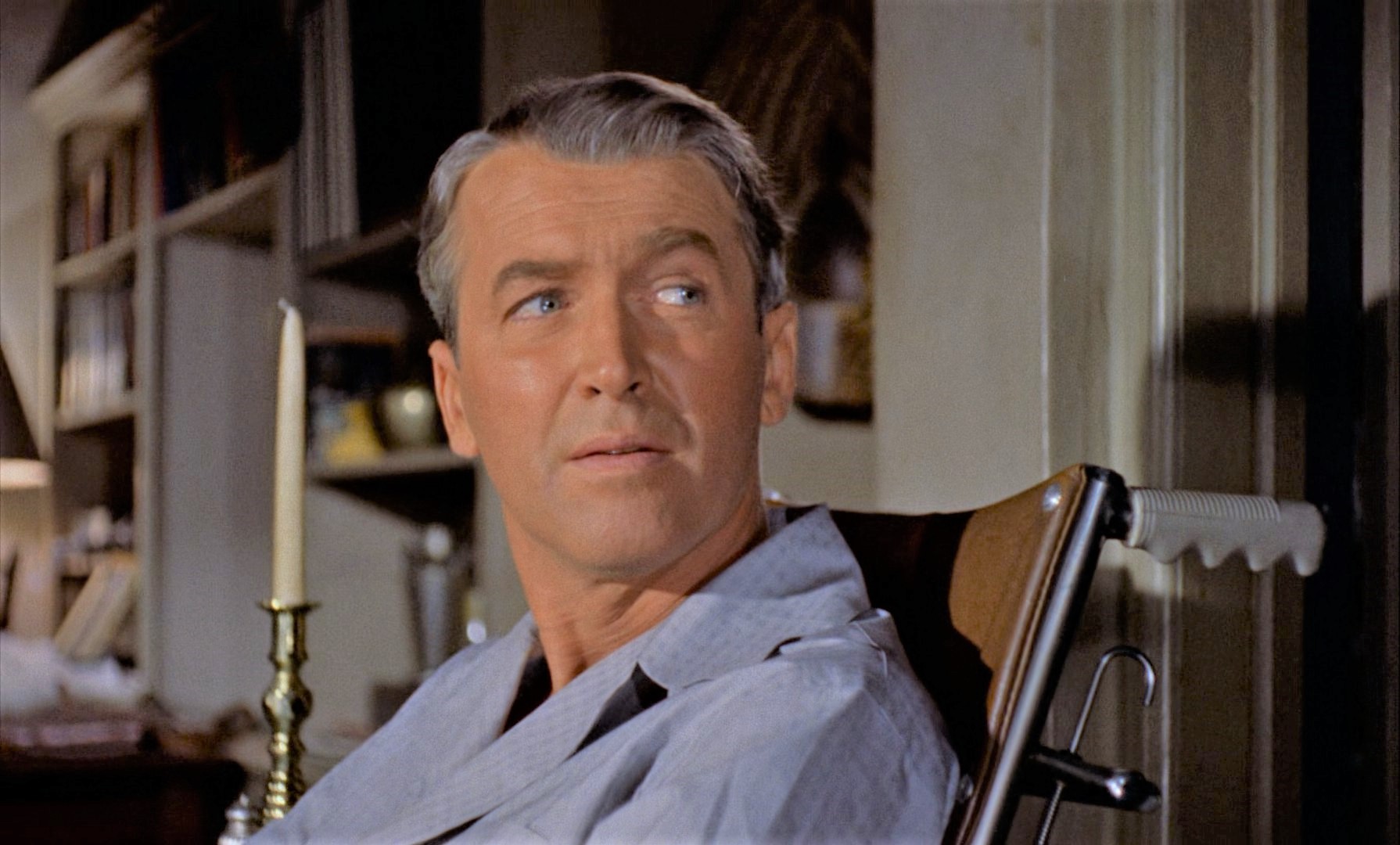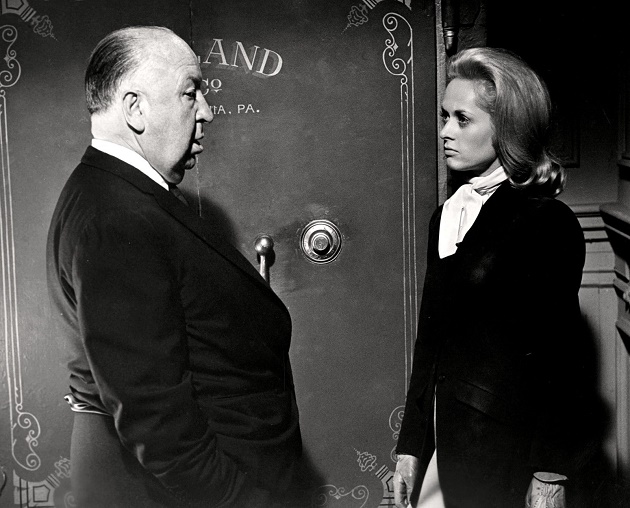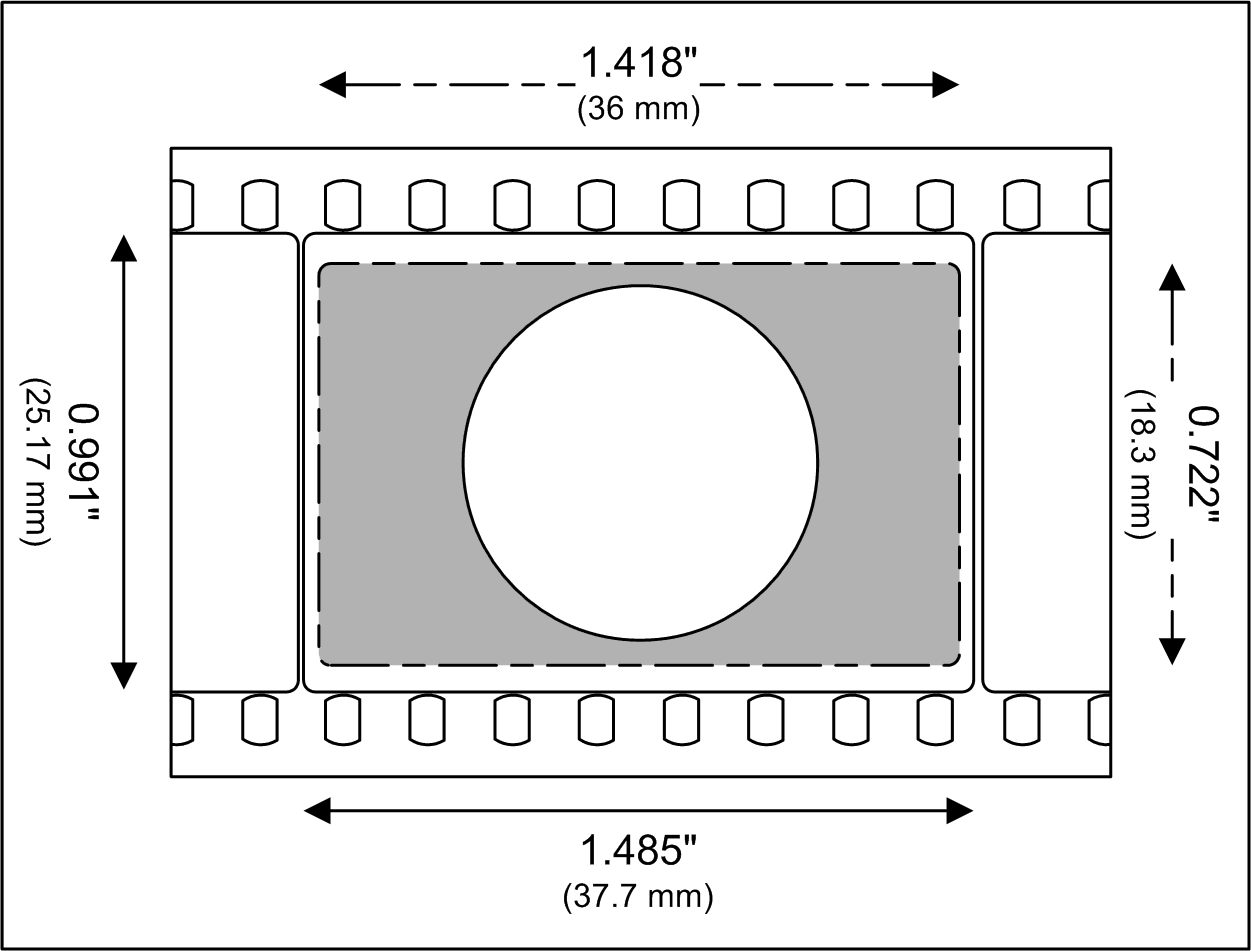|
Robert Burks
Leslie Robert Burks (July 4, 1909 – May 11, 1968) was an American cinematographer known for his collaborations with Alfred Hitchcock. Biography Burks was born in Chino, California, on July 4, 1909. At age 19, he began working as a special effects technician at Warner Bros. He was promoted to assistant cameraman in 1929, operating cameraman in 1934, and special effects director of photography in 1938. In 1944, he became a director of photography. By the age of 35, Burks had become one of the younger professionals in the industry to be fully accredited as a director of photography. He left Warner Bros. in 1953 to join Paramount Pictures alongside director Alfred Hitchcock Burks' first credit as director of photography was for ''Jammin' the Blues'' (1944), a short film featuring jazz musicians. He is known for his cinematography on several films directed by Alfred Hitchcock during the 1950s and 1960s. Over a 25-year career as a director of photography, Burks worked on 55 feat ... [...More Info...] [...Related Items...] OR: [Wikipedia] [Google] [Baidu] |
Chino, California
Chino ( ; Spanish for "Curly") is a city in the western end of San Bernardino County, California, United States, with Los Angeles County to its west and Orange County to its south in the Southern California region. Chino's surroundings have long been a center of agriculture and dairy farming, providing milk products in Southern California and much of the southwestern United States. Chino's agricultural history dates back to the Spanish land grant forming Rancho Santa Ana del Chino. The area specialized in fruit orchards, row crops, and dairy. Chino is bounded by Chino Hills and Los Angeles County to the west, Pomona to the northwest, unincorporated San Bernardino County (near Montclair) to the north, including the unincorporated community of Narod, Ontario to the northeast, Eastvale to the southeast in Riverside County and Orange County to the southwest. It is easily accessible via the Chino Valley (71) and Pomona (60) freeways. The population was 91,403 at the ... [...More Info...] [...Related Items...] OR: [Wikipedia] [Google] [Baidu] |
Rear Window
''Rear Window'' is a 1954 American mystery film, mystery thriller film directed by Alfred Hitchcock and written by John Michael Hayes, based on Cornell Woolrich's 1942 short story "After-Dinner Story, It Had to Be Murder". Originally released by Paramount Pictures, the film stars James Stewart, Grace Kelly, Wendell Corey, Thelma Ritter, and Raymond Burr. It was screened at the 1954 Venice Film Festival in competition for the Golden Lion. ''Rear Window'' is considered by many filmgoers, critics, and scholars to be one of Hitchcock's best films, as well as one of the List of films considered the best, greatest films ever made. It received four Academy Awards, Academy Award nominations, and was ranked number 42 on AFI's AFI's 100 Years...100 Movies, 100 Years...100 Movies list and number 48 on AFI's 100 Years...100 Movies (10th Anniversary Edition), the 10th-anniversary edition, and in 1997 was added to the United States National Film Registry in the Library of Congress as being " ... [...More Info...] [...Related Items...] OR: [Wikipedia] [Google] [Baidu] |
Art Film
An art film, arthouse film, or specialty film is an independent film aimed at a niche market rather than a mass market audience. It is "intended to be a serious, artistic work, often experimental and not designed for mass appeal", "made primarily for aesthetic reasons rather than commercial profit", and containing "unconventional or highly symbolic content". Film critics and film studies scholars typically define an art film as possessing "formal qualities that mark them as different from mainstream Hollywood films". These qualities can include (among other elements) a sense of social realism; an emphasis on the authorial expressiveness of the director; and a focus on the thoughts, dreams, or motivations of characters, as opposed to the unfolding of a clear, goal-driven story. Film scholars David Bordwell and Barry Keith Grant describe art cinema as "a film genre, with its own distinct conventions". Art film producers usually present their films at special theaters (repertory ... [...More Info...] [...Related Items...] OR: [Wikipedia] [Google] [Baidu] |
Marnie (film)
''Marnie'' is a 1964 American psychological thriller film directed by Alfred Hitchcock from a screenplay by Jay Presson Allen, based on the 1961 Marnie (novel), novel of the same name by Winston Graham. The film stars Tippi Hedren and Sean Connery. ''Marnie'' became a milestone for several reasons. It was the last time a "Hitchcock blonde" would have a central role in one of his films. It also marked the end of Hitchcock's collaborations with cinematographer Robert Burks, who died in 1968; editor George Tomasini, who died soon after ''Marnie'' release; and composer Bernard Herrmann, who was fired during Hitchcock's next film, ''Torn Curtain'' (1966), when Hitchcock and Universal Pictures, Universal studio executives wanted a pop-and-jazz-influenced score for the film. Plot Margaret "Marnie" Edgar, posing under the identity Marion Holland, flees with nearly $10,000 that she stole from the company safe of her employer, Sidney Strutt. Strutt is the head of a Tax advisor, tax consu ... [...More Info...] [...Related Items...] OR: [Wikipedia] [Google] [Baidu] |
Albert Whitlock
Albert J. Whitlock Jr. (15 September 1915 – 26 October 1999) was a British-born motion picture matte artist best known for his work with Disney and Universal Studios. Life and career Whitlock began his film career as a page at Gaumont Studios in London in 1929, before going on to build sets and work as a grip. Trained as a sign painter, he began an intermittent association with Alfred Hitchcock, assisting in the miniature effects for '' The Man Who Knew Too Much'' (1934) and then completing all of the signs for '' The 39 Steps'' (1935). Whitlock began working as a matte artist during World War II. Recruited by Walt Disney, who admired his work, he relocated to the United States in the early 1950s. At Disney, where the head of the Matte Department was fellow-Londoner and near-exact contemporary Peter Ellenshaw, he successfully mastered the impressionistic approach to matte painting for which he would become known. He remained with the studio for seven years, helping with the ... [...More Info...] [...Related Items...] OR: [Wikipedia] [Google] [Baidu] |
Tippi Hedren
Nathalie Kay "Tippi" Hedren (born January 19, 1930) is a retired American actress. Initially a fashion model, appearing on the front covers of ''Life'' and '' Glamour'' magazines (among others), she became an actress after being discovered by director Alfred Hitchcock while appearing on a television commercial in 1961. Hedren achieved great praise for her work in two of his films, including the suspense-thriller '' The Birds'' (1963), for which she won a Golden Globe Award for New Star of the Year, and the psychological drama '' Marnie'' (1964). She performed in over 80 films and television shows, including Charlie Chaplin's final film ''A Countess from Hong Kong'' (1967), the political satire '' Citizen Ruth'' (1996), and the existential comedy '' I Heart Huckabees'' (2004). Among other honors, her contributions to world cinema have been recognized with the Jules Verne Award and a star on the Hollywood Walk of Fame. Hedren's strong commitment to animal rescue began in 1969 wh ... [...More Info...] [...Related Items...] OR: [Wikipedia] [Google] [Baidu] |
The Birds (film)
''The Birds'' is a 1963 American natural horror-thriller film produced and directed by Alfred Hitchcock, released by Universal Pictures and starring Jessica Tandy, Rod Taylor, Suzanne Pleshette, and introducing Tippi Hedren in her film debut. Loosely based on the 1952 short story of the same name by Daphne du Maurier, it focuses on a series of sudden and unexplained violent bird attacks on the people of Bodega Bay, California, over the course of a few days. The screenplay is by Evan Hunter, who was told by Hitchcock to develop new characters and a more elaborate plot while keeping du Maurier's title and concept of unexplained bird attacks. While it initially received mixed reviews when originally released, its reputation improved over time and it has since been considered to be one of the greatest horror films of all time. At the 36th Academy Awards, Ub Iwerks was nominated for Best Special Effects for his work on the film. The award, however, went to the only other n ... [...More Info...] [...Related Items...] OR: [Wikipedia] [Google] [Baidu] |
Modernism
Modernism was an early 20th-century movement in literature, visual arts, and music that emphasized experimentation, abstraction, and Subjectivity and objectivity (philosophy), subjective experience. Philosophy, politics, architecture, and social issues were all aspects of this movement. Modernism centered around beliefs in a "growing Marx's theory of alienation, alienation" from prevailing "morality, optimism, and Convention (norm), convention" and a desire to change how "social organization, human beings in a society interact and live together". The modernist movement emerged during the late 19th century in response to significant changes in Western culture, including secularization and the growing influence of science. It is characterized by a self-conscious rejection of tradition and the search for newer means of cultural expressions, cultural expression. Modernism was influenced by widespread technological innovation, industrialization, and urbanization, as well as the cul ... [...More Info...] [...Related Items...] OR: [Wikipedia] [Google] [Baidu] |
Italian Neorealism
Italian neorealism (), also known as the Golden Age of Italian Cinema, was a national film movement characterized by stories set amongst the poor and the working class. They are filmed on location, frequently with non-professional actors. They primarily address the difficult economic and moral conditions of post-World War II Italy, representing changes in the Italian psyche and conditions of everyday life, including poverty, oppression, injustice and desperation. Italian Neorealist filmmakers used their films to tell stories that explored the contemporary daily life and struggles of Italians in the post-war period. Italian neorealist films have become explanatory discourse for future generations to understand the history of Italy during a specific period through the storytelling of social life in the context, reflecting the documentary and communicative nature of the film. Some people believe that neorealistic films evolved from Soviet montage films. But in reality, compared to ... [...More Info...] [...Related Items...] OR: [Wikipedia] [Google] [Baidu] |
Film Noir
Film noir (; ) is a style of Cinema of the United States, Hollywood Crime film, crime dramas that emphasizes cynicism (contemporary), cynical attitudes and motivations. The 1940s and 1950s are generally regarded as the "classic period" of American film noir. Film noir of this era is associated with a low-key lighting, low-key, black-and-white visual style that has roots in German expressionist cinematography. Many of the prototypical stories and attitudes expressed in classic noir derive from the hardboiled school of crime fiction that emerged in the United States during the Great Depression, known as noir fiction. The term ''film noir'', French for "black film" (literal) or "dark film" (closer meaning), was first applied to Hollywood films by French critic Nino Frank in 1946, but was unrecognized by most American film industry professionals of that era. Frank is believed to have been inspired by the French literary publishing imprint Série noire, founded in 1945. Cinema hist ... [...More Info...] [...Related Items...] OR: [Wikipedia] [Google] [Baidu] |
The Wrong Man
''The Wrong Man'' is a 1956 American docudrama film noir directed by Alfred Hitchcock and starring Henry Fonda and Vera Miles. The film was drawn from the true story of an innocent man charged with a crime, as described in the book ''The True Story of Christopher Emmanuel Balestrero'' by Maxwell Anderson and in the magazine article "A Case of Identity", which was published in ''Life'' magazine in June 1953 by Herbert Brean. It is recognized as the only Hitchcock film based on a true story and whose plot closely follows the real-life events. ''The Wrong Man'' had a notable effect on two significant directors: it prompted Jean-Luc Godard's longest piece of written criticism in his years as a critic, and it has been cited as an influence on Martin Scorsese's ''Taxi Driver''. Plot Alfred Hitchcock (or a double; he is in silhouette) appears on screen to tell the audience that the film's "every word is true". Christopher Emmanuel "Manny" Balestrero, a down-on-his-luck musician a ... [...More Info...] [...Related Items...] OR: [Wikipedia] [Google] [Baidu] |
VistaVision
VistaVision is a higher resolution, widescreen variant of the 35 mm motion picture film format that was created by engineers at Paramount Pictures in 1954. Paramount did not use anamorphic processes such as CinemaScope but refined the quality of its flat widescreen system by orienting the 35 mm negative horizontally in the camera gate and shooting onto a larger area, which yielded a finer-grained projection print. As finer-grained film stocks appeared on the market, VistaVision became obsolete. Paramount dropped the format after only seven years, although for another 40 years the format was used by some European and Japanese producers for feature films and by American films such as the first three ''Star Wars'' films for high-resolution special-effects sequences. In many ways, VistaVision was a testing ground for cinematography ideas that evolved into 70 mm IMAX and OMNIMAX film formats in the 1970s. Both IMAX and OMNIMAX are oriented sideways, as is Vist ... [...More Info...] [...Related Items...] OR: [Wikipedia] [Google] [Baidu] |







